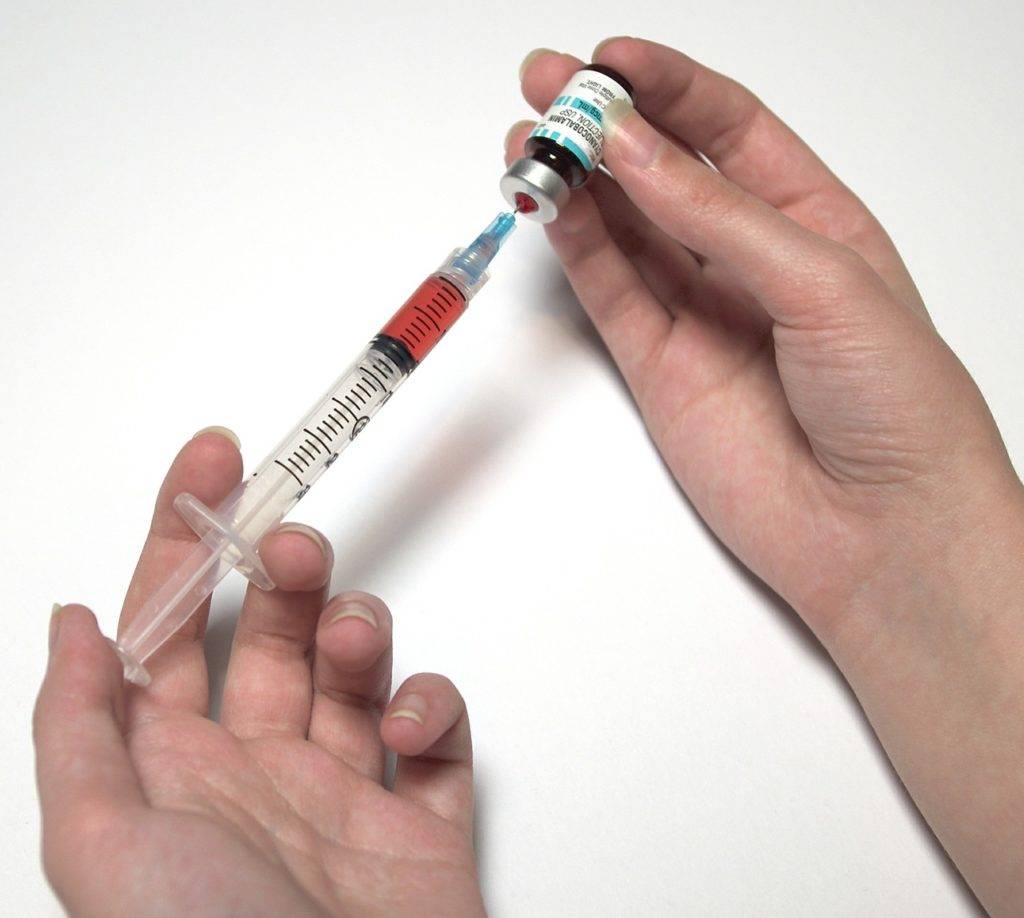Table of Contents
Harnessing telehealth has become prevalent over the past few years. Telehealth particularly benefits children since it offers timely and convenient medical care. Sadly enough, not all children can enjoy its potential benefits.
Stay on this page as we explore the current situation of pediatric telehealth and the programs implemented to ensure all children benefit from it. Besides accessibility, essential factors such as convenience and user-friendliness are also considered.
What is Telehealth?
Similarly known as telemedicine, it is the delivery of healthcare services through technologies in telecommunication. Patients receive and benefit from the services through virtual consultations, remote monitoring, and teleeducation.
One of the key features is telehealth services. This involves extending medical services without requiring the patient to be physically present at the facility. How? Stay on this page as we explore the wonders of this medical breakthrough.
 Pediatric Telehealth
Pediatric Telehealth
Pediatric telehealth is the use of telehealth services specifically for children. The delivery of healthcare services is made possible through the following:
- virtual consultations for continuous care and follow-up checkups
- remote monitoring of persistent and chronic medical conditions
- access to virtual behavioral and mental health services
- means of counseling patients and their families concerning topics like wellness and disease prevention
Telehealth is a convenient medium for health professional and patient interaction. The patient can still receive quality healthcare services even with no physical presence, contributing to better health outcomes and a positive customer experience.
Telehealth is a valuable resource for families who live in remote areas to receive healthcare services. Children who have mobility limitations or chronic conditions that require frequent monitoring can still receive the care of their pediatricians.
Equity in Pediatric Telehealth: Ensuring Fair Access and Outcomes for All Children
The COVID-19 pandemic highlighted the importance of telehealth in delivering healthcare services, including pediatric care. Telehealth was able to address the longstanding issue of unequal access to healthcare among socioeconomic groups.
However, despite this good news, public health experts discover that there’s still a strain of likelihood that telehealth may widen the digital divide and magnify existing health disparities. Technology can’t make everything perfect; it may fail in certain aspects.
Ensuring equity is essential to providing fair access and outcomes for all children. However, telehealth services, particularly pediatric telehealth, still have their share of downsides and drawbacks. We list them below:
Access to Technology and Internet Connectivity

Children from low-income families have less access to reliable internet access and digital devices, limiting access to telehealth services. Schools may provide access to technology. However, these resources may not be sufficient for telehealth appointments.
Healthcare providers should work with community organizations, schools, and libraries to provide access to technology as well as internet connectivity for underserved children.
Language and Cultural Diversity
Cultural competence includes understanding and respecting the values, beliefs, and practices of different cultures and using this knowledge to provide appropriate care. Health providers ensure that telehealth services are available in numerous languages.
There is a sizable population in which English is not their medium of communication. As such, pediatric telehealth should employ interpreters for families who speak languages other than English. Healthcare should be culturally competent and sensitive to this diversity.
Factors other than technology further impede accessibility for children with disabilities. Healthcare providers must consider the additional barriers faced by these children. They must offer accommodations like closed captioning and sign language interpreters.
Financial Constraints
There may be families who can’t afford the cost of the tools and equipment needed to connect to a telehealth service. Healthcare providers should not overlook the affordability of the hardware needed to extend telehealth services to these families.
Medical professionals should collaborate with insurance companies and lawmakers so that telehealth services are included in insurance packages. Also, families should be extended financial support to satisfy any associated expenses.
The Benefits of Pediatric Telehealth
Telehealth can boost healthcare standards for pediatric patients in many ways. We list several benefits below:
Improved Access to Care
It provides children with access to medical care, regardless of their location. This is particularly beneficial for children who live in rural areas where distance and transportation issues may impede their ability to receive healthcare services.
Convenience
It provides families with more convenient options for medical care. Virtual consultations can be scheduled at a time that’s convenient for the family, so there’s no need to travel to a healthcare facility.
Improved Outcomes
Pediatric telehealth has been shown to improve health outcomes for children. Studies have found that telehealth reduces hospital admissions as well as emergency department visits. Pediatric telehealth can also enhance medication adherence.
Reduced Costs
Pediatric telehealth can be less costly than in-person medical care. Families can save money on transportation costs. They may also avoid the need for time off work.
The Challenges of Pediatric Telehealth
Despite its benefits, there are several challenges to the widespread adoption of pediatric telehealth. Some of these challenges include:
- Access to Technology
Numerous families don’t have access to the technology required for telehealth services.
- Limited Provider Availability
Not all healthcare providers offer telehealth services. This can limit access for families who are interested in using them.
- Lack of Reimbursement
Health insurance doesn’t cover telehealth or telemedicine services. Due to this, poor families may not be able to afford to avail themselves of such services.
- Privacy Concerns
There are concerns about telehealth services’ privacy and security. This includes concerns about the storage and transmission of personal health information.
Efforts to Make Pediatric Telehealth Fair for All Kids

Programs are underway to address the challenges associated with pediatric telehealth. The ultimate objective is to make telehealth accessible to all children.
Increased Access to Technology
Innovations in digitalization are underway to ensure more people have access to technology. This includes programs to provide low-cost mobile devices and internet access.
Ease of Use of Telehealth Apps
Healthcare providers can maximize telehealth technology if platforms are programmed to be user-friendly for both doctors and patients. This encourages more users due to the convenience and ease of training. thus increasing the availability of such services.
Expanded Insurance Coverage
Several states have expanded insurance coverage for telehealth services. This helps make telehealth services more accessible for financially challenged families.
Improved Privacy and Security
Telecommunication providers have taken initiatives to improve the privacy and security of telehealth services. This includes the development of standards for data storage and transmission. Telehealth will use secure communication channels.
Collaboration and Partnerships
Technology companies and healthcare providers will forge strategic partnerships to develop telehealth solutions to keep abreast of technology, thus adding more value to the users of the technology.
Telehealth Equity
The ultimate objective is to ensure that all individuals—children and their families—have access to telehealth services regardless of geographical limitations, mobility issues, or cultural and language diversities.
The Role of Pediatricians in Ensuring Quality Care in Telehealth Visits
Pediatricians play a critical role in ensuring quality care during telehealth visits. They must be aware of the unique challenges associated with telehealth visits.
- Ensure reliable and secure telehealth consultations.
Pediatricians must ensure that their communication systems are HIPAA-compliant and have adequate bandwidth to provide a smooth telehealth experience. They should also ensure that their patients have the resources and access to the technology.
- Communication skills to conduct telehealth consultations.
A challenge of telehealth visits is the lack of physical interaction between the pediatrician and the patient. Hence, pediatricians must be skilled in communication techniques to engage patients and their families in a telehealth setting.
Conversely, pediatricians must be competent to determine when a personal visit is more necessary than a telehealth consultation.
- Ensure the quality of telehealth consultations.

Pediatricians ensure that telehealth visits are conducted with the same level of quality as personal visits. They must establish clear guidelines for telehealth visits, including informed consent, privacy policies, and documentation standards.
Pediatricians also ensure that the telehealth visit covers all vital patient care aspects. This includes counseling, medical history, and physical exams.
The Role of Parents in Pediatric Telehealth
Parents play a vital role in the success of pediatric telehealth. Below are several tips to help parents make their child’s telehealth experience a great one:
- Prepare in advance.
Prepare the necessary information and materials before the telehealth visit. This includes the child’s medications, medical history, and inquiries that need to be made.
- Create a comfortable environment.
Set up a quiet and private space for the telehealth visit. This can help reduce distractions and make your child feel more comfortable.
- Test the technology in advance.
Test the technology before the visit to ensure that everything is working properly. This includes testing the internet connection, camera, and microphone.
- Engage your child.
Encourage your child to participate in the telehealth visit by asking them questions and involving them in the conversation. This can help make the visit more engaging and reduce anxiety.
- Follow-up
Make sure to follow up with any recommendations from the healthcare provider. This helps to ensure that the child receives the necessary care.
Harness Telehealth Technology for Your Children
Pediatric telehealth has revolutionized the way children receive medical care. It can provide access to care regardless of location and improve health outcomes.
Equitable access to telehealth for all children requires addressing the challenges associated with its adoption, such as limited technology access, issues of reimbursement, privacy concerns, and a lack of sufficient providers.
Children deserve the best medical services possible. By collaborating towards resolving these problems and fostering telehealth equity, we can ensure that all children receive adequate care.
We at Omega Pediatrics fully support telehealth for all children, regardless of its shortcomings and drawbacks. In particular, we recognize and respect the diversity of our young patients based on their cultural background and economic status.
Nevertheless, Omega Pediatrics offers telehealth services for our patients who, for various reasons, can’t physically come to our office. Book an appointment for the service and discover the marvels of telehealth technology!
FAQ
What is pediatric telehealth?
Pediatric telehealth involves delivering healthcare services specifically for children through virtual consultations, remote monitoring, and teleeducation. It encompasses virtual checkups, remote monitoring of chronic conditions, and access to mental health services for kids.
What are some challenges to equitable access to pediatric telehealth?
Challenges include limited access to technology and internet connectivity, language and cultural diversity, financial constraints, and concerns about privacy and security.
What are the benefits of pediatric telehealth?
Pediatric telehealth improves access to care, offers convenience for families, enhances health outcomes, and can reduce costs associated with in-person visits.
How can parents ensure a successful telehealth experience for their child?
Parents can prepare in advance by gathering necessary information, create a comfortable environment for the telehealth visit, test the technology beforehand, engage their child during the visit, and follow up on any recommendations from the healthcare provider.
What efforts are being made to address challenges and promote equity in pediatric telehealth?
Efforts include increasing access to technology, expanding insurance coverage for telehealth services, improving user-friendliness of telehealth platforms, enhancing privacy and security measures, and fostering collaboration among technology companies and healthcare providers.




